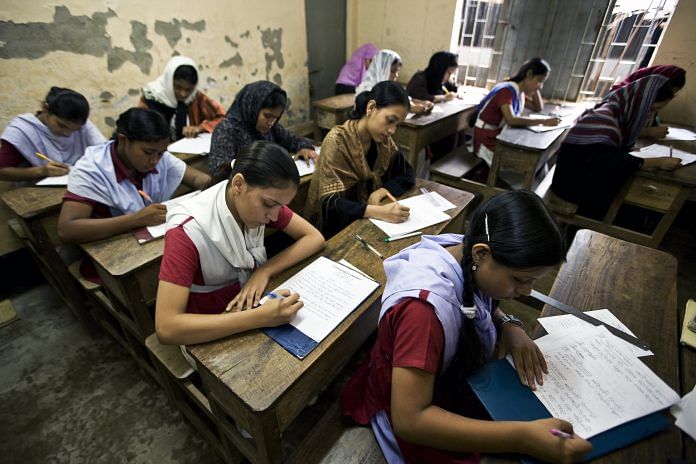ASER report finds more youth have access to higher education than in the last decade, but the skills they’re acquiring from school remain low.
New Delhi: While the number of children in India who have studied until class 8 has doubled in the last decade, the skills acquired by them remains worryingly low, says the ASER report for 2017.
NGO Pratham’s Annual Status of Education Report (ASER) ‘Beyond Basics’ for 2017 released Tuesday says that 86 per cent of India’s youth in the age group of 14-18 years are now enrolled in formal education.
The report says that near-universal enrollment and automatic promotion of students from elementary school meant that a large chunk of youth in rural India now has access to higher education. But the report also says that while the ability of students to understand simple English improved with age, the ability to understand math still remained poor.
As the Right To Education act covers children only until the age 14, and voting rights are given at age 18, these four years are crucial to the youth to skill them for jobs and ensure overall development and accessibility, the report says.
The report found that 60 per cent of youngsters want to study beyond class 12.
This is the first time the older age group of 14 to 18-year-olds has been included in the study. ASER studies from 2006 to 2016 had focused only on the age group of 5 to 16-year-olds. Currently, one in every 10 individuals falls in the age group of 14-18 making it necessary to study their educational progress, the report says.
The report shows a gender gap of just 1 per cent in the proportion of 14-year-old boys and girls enrolled. However, this situation changes quite drastically as the age increases.
Once eight years of elementary schooling are completed, girls begin to abandon schooling in far greater numbers than boys. The report says that 50 per cent of boys who had left school said their reason for doing so was either lack of interest, or because they failed.
However, for girls, the biggest reason for dropping out of school was stated to be family constraints (32.4 per cent).
The 2017 report says that at least 78 per cent of 14 to 18-year-olds in rural India are engaged in farm work, irrespective of whether they are studying or not. Yet their enrollment in agricultural or veterinary courses was lower than 0.5 per cent, which shows agriculture is still is not seen as a vocational option.
The parameters for judging included:
Activity: What are they currently doing – studying, working, or both?
Ability: Can they apply basic reading and arithmetic abilities to everyday situations?
Awareness and exposure: What do youth report in terms of their exposure to media?
Aspirations: What are their educational and career goals?
Read the key findings of ASER 2017 here.



